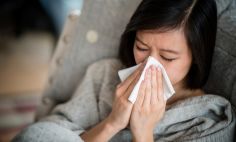There’s nothing quite like a hot cup of cocoa or a slow-cooked meal to soothe the soul on a chilly winter’s day. But a simple mistake can turn getting warm into getting burned.
Burns are a common injury that can range from mild to severe. Whether it’s a minor kitchen mishap or a more serious accident, understanding types of burns, their causes, and how to treat them can help keep you and your loved ones safe all year round.
Types of burns
A burn is damage to your body’s tissues caused by heat, chemicals, electricity, sunlight, or radiation. Scalds from hot liquids and steam, building fires, and flammable liquids and gases are the most common causes of burns.
First-degree burns
- What it means: These burns affect only the outer layer of skin (the epidermis)
- What it looks like: The skin is red and painful, like a sunburn
- What might cause it: Spilling a hot drink on yourself
Second-degree burns
- What it means: These burns affect the top two layers of skin (the epidermis and the dermis)
- What it looks like: The skin looks wet or moist, and painful blisters may form
- What might cause it: Accidental contact with a hot stove burner
Third-degree burns
- What it means: These burns affect all three layers of skin (the epidermis, the dermis, and the subcutaneous tissue)
- What it looks like: The skin may turn black, white, or bright red with a leathery appearance
- What might cause it: Getting caught in a fire
Ouch! I burned myself! Now what?
If you or someone around you experiences a burn, it’s crucial to act quickly. Here’s a step-by-step guide to treating a burn.
First-degree burns
- Cool the affected area immediately by running it under cool water or applying a cold, wet compress. Do not apply ice to a burn.
- Apply petroleum jelly or aloe vera gel a few times a day to help soothe and protect the skin.
- Consider taking over-the-counter pain medicine (such as acetaminophen or ibuprofen) to ease pain.
- Protect the affected area from direct heat and sunlight to prevent further damage.
Second-degree burns
- Follow all first-degree burn treatment steps.
- Avoid touching or breaking blisters because this can increase the risk of infection.
- Apply a nonstick bandage if clothing or daily activity might irritate the skin or blisters or if the blisters have broken open.
Third-degree burns
- Seek immediate medical attention.
- While waiting for medical help to arrive, cover the affected area in a clean bandage and try to keep it raised above heart level.
How to avoid getting burned
It’s likely you’ll experience a burn at some point. Accidents happen! However, there are some steps you can take to minimize the risk of burns:
- Prevent spills by keeping hot foods and liquids away from table edges.
- Never leave hot beverages or cooking pots and pans unattended around children or pets.
- Use a spill-proof lid when traveling with hot drinks.
- Prevent spills by not overfilling cups or bowls.
- Warn others when serving hot liquids or dishes.
- Always use oven mitts when cooking or handling hot food or drinks.
- Warn others when household appliances such as stoves or irons are hot.
This article was originally published in February 2022. It has been updated.







